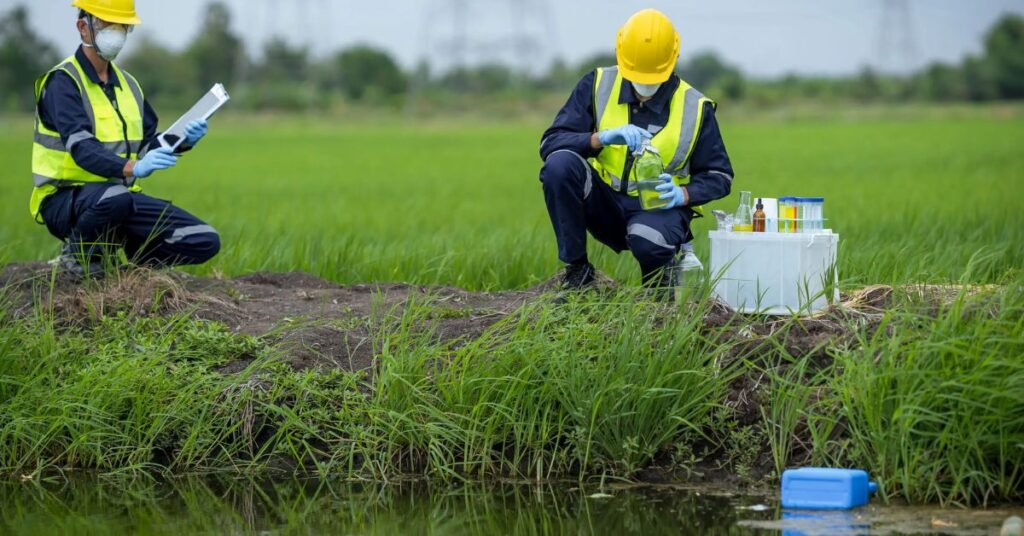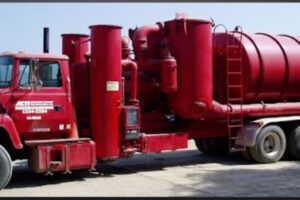Pollution and environmental degradation are no longer distant threats. They’re current realities demanding innovative and sustainable responses. From microplastic pollution in oceans to hazardous waste contaminating soil, the urgency for advanced cleanup technologies has never been greater.
This article explores the landscape of environmental remediation, examining modern pollution cleanup innovations that support long-term sustainability, regulatory compliance, and real-world implementation.
The Urgency: Why Pollution Cleanup Innovations Are Critical Now
Our planet is in crisis. According to the Cleanup Technologies, air pollution alone causes over 7 million premature deaths every year. Meanwhile, land and water sources are increasingly contaminated by chemicals, plastics, and industrial waste.
Key Challenges Driving Cleanup Needs:
- Soil Contamination: Affects crop productivity and food safety
- Airborne Pollutants: Linked to respiratory diseases and climate change
- Water Pollution: Over 2 billion people lack access to clean drinking water
- Microplastics: Found in 114 aquatic species, many of which are consumed by humans
- Limited scalability
- High energy consumption
- Incomplete pollutant removal
Why Traditional Cleanup Fails:
Hence, the focus has shifted to modern pollution solutions built on scientific advancements and eco-innovation.
Fundamentals of Environmental Remediation Technologies

Environmental remediation refers to the process of removing contaminants from soil, water, and air to restore them to a safe state. It’s a cornerstone of green cleanup solutions and a necessary step toward sustainability.
Core Concepts in Remediation:
- Bioremediation: Using microbes to break down contaminants
- Phytoremediation: Employing plants to absorb or neutralize toxins
- Advanced Oxidation Processes (AOPs): Chemical treatment involving hydroxyl radicals
- Nanomaterials: Nano-sized particles that can isolate or degrade pollutants
These technologies form the backbone of next-gen environmental tech, ensuring less invasive, more cost-effective solutions.
Real-World Solutions: Modern Pollution Technologies in Action
Let’s explore how advanced cleanup technologies are applied in real environments.
Case Study 1: Membrane Bioreactors (MBRs) in Wastewater Treatment
Location: Singapore’s NEWater plants
Impact: 40% of national water demand met through recycled wastewater
Technology Highlights:
- Integrates biological treatment and membrane filtration
- Removes organic and inorganic pollutants
- Reduces ecological footprint compared to conventional plants
Case Study 2: Microplastic Removal from Rivers
Project: Interceptor by The Ocean Cleanup
Focus: Collecting plastic debris from rivers before it reaches oceans
Outcome:
- Deployments in Indonesia, Dominican Republic, and the U.S.
- Thousands of tons of plastic waste intercepted annually
Case Study 3: Nanomaterials in Soil Cleanup
Application: Zero-valent iron nanoparticles .
Used for: Degrading chlorinated solvents in contaminated sites
Intermediate Technologies Reshaping Remediation Efforts
Beyond foundational tools, intermediate technologies play a transitional role in pushing cleanup toward automation, higher efficiency, and sustainability.
Notable Intermediate Solutions:
- Reverse Osmosis Systems: Removes salts and contaminants from water
- Portable Soil Remediation Units: Used in remote disaster zones
- AI-Powered Monitoring Systems: Predict pollutant spread in real-time
- Green Engineering: Designs that integrate natural purification processes
Benefits:
- Improve regulatory compliance
- Lower ecological footprint
- Enable resource recovery in industrial settings
| Technology | Application | Benefit |
| Reverse Osmosis | Industrial wastewater | Produces clean discharge |
| Portable Soil Units | Post-disaster cleanups | Fast deployment, mobile |
| AI Monitoring Systems | Pollution forecasting | Reduces response times |
| Green Engineering Techniques | Building and landscape design | Promotes self-cleaning systems |
Categorizing Advanced Cleanup Technologies
Cleanup Technologies into distinct categories, often based on the nature of pollution and site-specific requirements.
Categories:
- Chemical Technologies: AOPs, activated carbon, chemical oxidation
- Biological Technologies: Bioremediation, phytoremediation
- Physical Methods: Soil washing, sediment dredging, filtration
- Hybrid Solutions: Combining multiple methods for layered impact
These categories can be adapted based on urban vs. rural settings, water vs. land contamination, and cost considerations.
“Hybrid remediation is often the most efficient, offering both depth and breadth of pollutant removal,” says Dr. Nadia Hu, Environmental Engineer, MIT.
Implementation Considerations: Scaling, Compliance & Infrastructure
Effective implementation of pollution control advancements requires attention to several critical factors:
Infrastructure Needs:
- Pumping systems for groundwater remediation
- Secure containment for hazardous waste
- Solar-powered sensors for monitoring remote sites
Legal & Regulatory Factors:
- U.S. EPA standards on contaminant levels
- European REACH Regulation for chemical safety
- ISO 14001 Environmental Management Certification
Workforce Training:
- Specialized training for equipment handling
- Certifications in environmental health and safety
Academic and R&D-Led Innovations Driving Future Cleanup

Universities and research institutions are at the forefront of remediation innovations.
Research Highlights:
- MIT: Development of smart nanobots for micro-scale decontamination
- Stanford: Algae-based air purification systems
- University of Tokyo: AI for predicting toxic runoff events
These projects emphasize the importance of Cleanup Technologies biodiversity conservation, and technology’s role in climate action.
“Our goal is to make environmental cleanup both scalable and equitable,” – Dr. Lin Tao, Head of Environmental Studies, Stanford University.
Cross-Sector Adoption & the Future of Environmental Technology Solutions
The effectiveness of environmental technology solutions lies in their adoption across sectors: public, private, and academic.
ESG and Sustainability Strategy:
- Corporations increasingly invest in Cleanup Technologies as part of their ESG commitments
- Environmental compliance now influences brand trust and shareholder confidence
Satellite Monitoring:
- Sustainability satellites track pollutant dispersion
- Used for wildfire smoke, oil spills, and methane leak detection
Public-Private Collaborations:
- Governments offering subsidies for wastewater treatment plants
- NGOs deploying tech in underserved regions
What’s Next?
- AI and IoT integration for autonomous remediation
- Blockchain for traceable waste management
- Expanded role of land reclamation in urban planning
Tools, Comparisons & Additional Resources
Glossary of Key Terms:
| Term | Definition |
| Bioremediation | Microbial cleanup of contaminants |
| Phytoremediation | Plant-based absorption or breakdown of pollutants |
| Advanced Oxidation Process | High-efficiency chemical oxidation of harmful substances |
| Nanomaterials | Nano-sized particles for targeted remediation |
| Reverse Osmosis | Water purification via pressure-based membrane filtration |
Technology Comparison Table:
| Traditional Method | Advanced Cleanup Technology | Advantages |
| Chlorination | AOPs | Less byproduct, better efficacy |
| Gravel Filtration | Membrane Bioreactors | Higher filtration precision |
| Burning of Waste | Nanomaterial Catalysts | Reduced emissions |
FAQ‘s
What are advanced cleanup technologies?
They’re modern methods that remove pollution from air, water, and soil using smart and green tools.
How are they different from older methods?
Advanced cleanup works faster, cleaner, and uses less harmful materials than old-style cleanup methods.
Where are these technologies used?
They’re used in cities, factories, rivers, and places with dirty soil or water.
Are these technologies expensive?
Cleanup Technologies they save money later by working better and lasting longer
Can you give examples of these technologies?
Yes! Things like plant-based cleanup, Cleanup Technologies, and ocean plastic traps are all examples
Conclusion
From bioremediation to nanotechnology, the future of environmental cleanup is both high-tech and eco-friendly. Governments, corporations, and communities must continue to invest in advanced cleanup technologies not as an optional upgrade—but as a planetary necessity.
As challenges evolve, so must our solutions. With the right tools, informed strategies, and commitment to sustainability, we can turn today’s contaminated sites into tomorrow’s success stories








